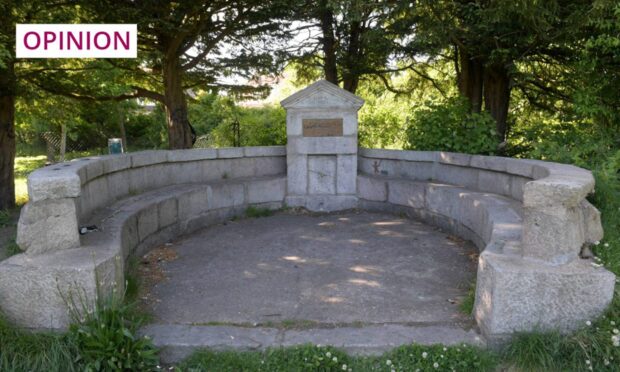The great French Impressionist artist Claude Renoir believed that plumbing changed the world, and who am I to disagree?
His argument was that a village should only be as large as a well – a tobar in Gaelic – could sustain, and that tubes and pipes carrying water pushed hamlets beyond capacity.
I’m old enough to remember carrying water home from the well in a bucket. Though, in our case, it wasn’t a well but the local river, which ran down the back of our house. It was good, clean, fresh, peaty water.
In more recent times, when I first came to live in Skye, I was fortunate enough to rent a house which had its own spring in the garden. The water was the best I’ve ever tasted.
What Renoir meant was that communities changed when the village well was replaced by the flowing water pipe. It meant that far more people could live in the area than before. With that population growth, you were less likely to know and meet your neighbour.
If you can just turn on a tap in your kitchen then you don’t need to carry the old tin bucket to the well, where all the old village gossip and stories were once shared.
The growth of cities has been remarkable through history. I’m sure we all understand why it has happened – gathering together gives you security against an enemy, and the pooling of trade makes life easier and more economical. Whether it makes it better I leave to you, dear reader.
Part of the answer may simply have to do with scale. In Gaelic, the word for a village or city is “baile”, which was originally just the name given to the (largish) farm in the area. So that today, for example, we have Balblair (Baile a’ Bhlàir – the farm or township of the moor), Ballatar (Baile Leitire – the town at the hillside), Balmedie (Baile Meadhan – the farm or town in the middle), Balmoral (Baile Mòrail – the farm or village of the big hill), Balnagowan (Baile na Gabhainn – town of the cattlefold), and so on and so forth.
Origins of Aberdon
Aberdeen itself is interesting. The first part of the name comes from the word “aber”, which goes back to the ancient British language, or Brythonic, which was a P-Celtic language. It’s the same root word (meaning estuary or infall) which also gives us the name for Arbroath (previously Aberbrothick) and Abriachan, near Inverness.
The second part of Aberdeen’s name is from the river Don. It may be of interest to readers that Aberdon was the name for Old Aberdeen prior to the suppression of the Catholic form of religion in 1560.
The more modern version simply means “the infall of the Den (Dein) burn”. The Den burn joined the Dee at Point Law before its course was altered by man. It was the harbour of the ancient town, and ships came up to the end of Market Street.
It’s believed that Aberdeen was established in the eighth century as a fishing settlement, but would have grown into a small town with a population of around 3,000 by the 12th century, with its four main streets forming a cross, and a market at Denburn.
Today, its population is around 200,000 and, though the city is more associated with oil wells than water wells, the latter can still be found in Aberdeen.
The original water cooler conversation
I’m not sure how many (if any of them) work, but certainly the history books tell of at least 20, including St Fittick’s Well, which was located in the Bay of Nigg, but was washed away by coastal erosion in the early 20th century. St Fittick is, of course, the patron saint of that braw area of Aberdeen: Torry.
There was also the Well of Spa which, as far as I can make out, is now located at Skene Street, and the Firhill Well, which stood at the bend of a lane leading from what is now Sunnybank Road to what is now Bedford Road. It takes its name from being located near a fir-clad hill. (Thanks to the Silver City Vault website for that information!)
I think Renoir was right and wells should now be brought back in all their freshness and splendour
I don’t know who runs Doric Columns, but it’s also an excellent site which gives a whole well of information about ancient wells, and much other stuff about Aberdeen. It tells of Carden Heugh Well and The Angel Well and St Mary’s Well and The Garden Nook Well and Dyers Well and The Hargate Draw Well and the lovely Netherkirkgate Cistern Well, situated at the top of Carnegie’s Brae, once beautifully drawn by James Skene, the artist of Rubislaw.
So, I think Renoir was right and wells should now be brought back in all their freshness and splendour. The nearer a thing (water and language and democracy included) is to its source, the better.
Angus Peter Campbell is an award-winning writer and actor from Uist


Conversation